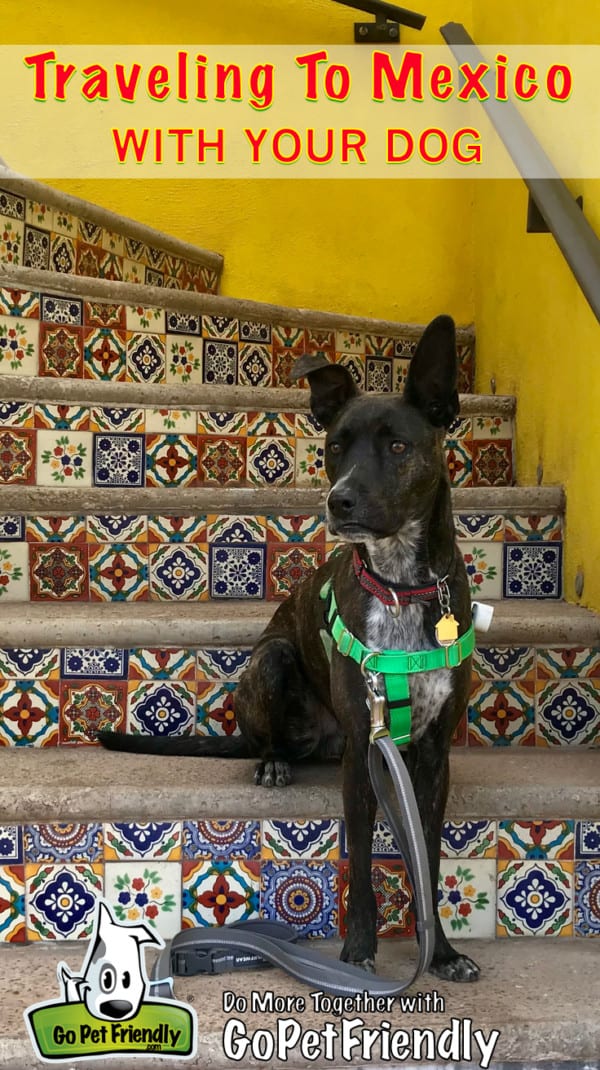Taking pets to Mexico on airlines
Each airline has its own rules about taking pets when you travel (and how many pets they will transport per passenger or family group). Following are universal guidelines that will apply to most airlines. You should, however, check your airline’s web site for latest details and policies and call them for clarification if necessary.
Crates and Kennels: The airline will require you to use a purpose-built crate (for cats) or kennel (for dogs) if you want to transport them on the airline. Cardboard or plastic boxes and other make-shift containers will not be accepted.
Health Certificates: According to SENASICA, If you are not traveling from the USA or Canada, you will need to show a health certificate from a veterinary surgeon.
Excess Baggage Fees: Fees vary by airline — check with them for details. If you have a big dog (combined weight of kennel and animal greater than 100lbs) then the dog may have to be transported separately (as cargo). Airlines have been restricting baggage allowances and increasing fees for excess baggage of late, so be sure to check this detail with your airline so that you understand the additional costs involved.
Proper Labeling on Crates and Kennels: Your full name, address and telephone contact numbers (at destination) need to be clearly displayed. The crate should indicate which way is up, and the words “LIVE ANIMALS” (in capital letters) should be prominently displayed. Your pet(s) should also be properly tagged.
Interior of Crates and Kennels: The interior should have some sort of absorbent lining to absorb any urine or feces. Shredded newspaper will work if you don’t have a purpose made material from a pet store. Do not place food or water inside the crate or kennel but instead place two dishes inside which airline staff may make use of. Some people freeze water in a dish, which melts during the flight providing your pet with water if it gets thirsty.
Upon Arrival: Have food and water ready for your pet. Mexican authorities will allow you to import a reasonable ration of dry food for your pet to eat whilst in-transit. You may place these items inside the crate or kennel; keep water containers and food packets sealed. You will need to present your health certificates to the zoo sanitary kiosk at the port of entry in Mexico for your pet to be allowed into the country. See detailed arrival information, below.
See Blog: A Park Full Of Schnauzers
The rules for traveling to Mexico from the U.S. with a dog changed in 201 If you’re planning to head south of the border with your pup, these tips will help make your trip a success!

Whether you’re walking across the border for the day or planning a longer trip to Mexico, there’s no reason to leave your pup behind! The rules for traveling to Mexico with a dog changed in 2019, and it’s now easier than ever to take your furry travel buddy along.
But remember, it’s just as important to get back into the United States as it is to get into Mexico! So be sure you’re prepared for crossing the border in both directions.
Arriving with your pet in Mexico
You are permitted to import two pets (cats, dogs, or a cat and dog) into Mexico. This limit is per person, so if you are a couple, you can import up to 4 pets. Note that if you import more than 3 pets, you will need to pay additional fees. See the website links below for details and procedures.
If you are NOT traveling from the USA or Canada, before you travel, your veterinary surgeon needs to provide you with a health certificate for each pet, issued by an official authority or by a licensed veterinarian in your home country, that should include proof of vaccines against rabies and distemper, administered at least 15 days before the arrival of your pet in Mexico. If you live in the US or Canada you do not need to present this certificate.
The documents (an original and one photo copy) must be presented on official documentation (i.e. headed and/or sealed paper) provided by a competent authority or veterinarian and include:
Your pet(s) need to be brought to Mexico in a pet transporter which is generally clean and hygienic, without a bed, and without any toys or ‘snacks’. Dry pet meal and water is allowed (see tips, above) but any accessories (e.g. beds, toys, snacks, chew-bones, etc.) will be confiscated for secure disposal.
On arrival at the port of entry (land, sea or air), take your pet(s) to the zoo sanitary kiosk (look for the acronym SAGARPA/SENSAICA which the Ministry responsible for this process) at the port of entry and present the documentation to facilitate your pet’s entry into Mexico.
The information in this guide assumes that you are transporting a cat or dog. To seek permission for the import of other animals/birds/reptiles, contact your local Mexican Consulate. Exporting animals (especially birds and reptiles) is an involved process that requires considerable paperwork for export and import—check your home country’s rules for the export of birds and reptiles in particular. Note also that if you’re flying to Mexico you’ll also need to contact your airline to ask about its policies of transportation of animals other than cats and dogs.
See also: On Importing Pets and Animals to Mexico